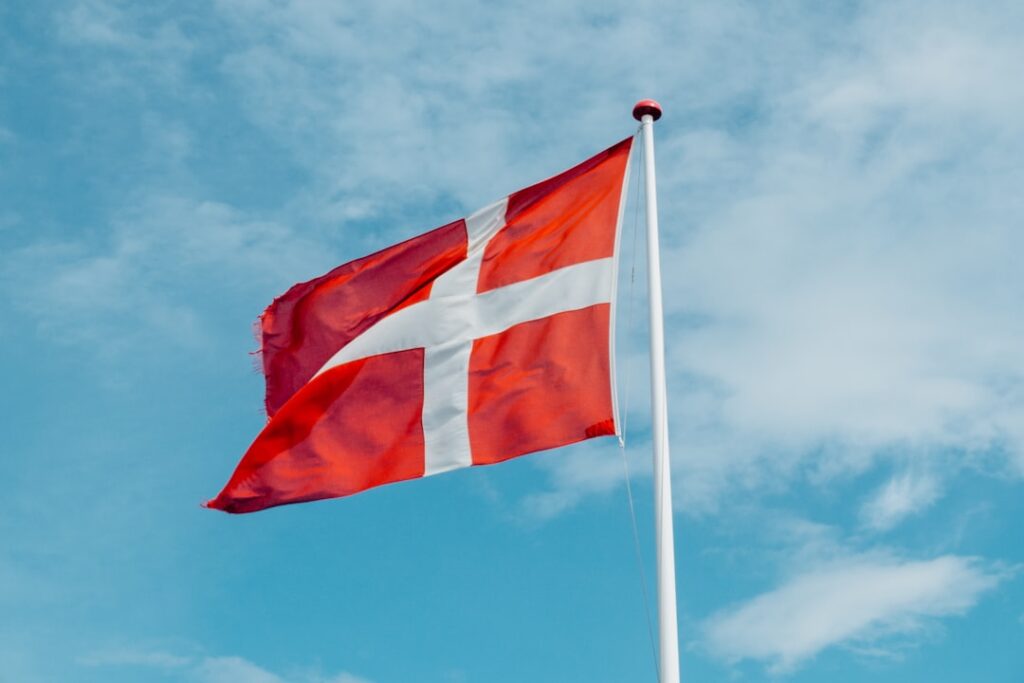The Tongan flag, adopted on November 4, 1875, is one of the world’s oldest national flags still in use. It features a red field with a white canton containing a red cross. This simple yet distinctive design represents Tonga’s sovereignty, identity, and cultural heritage.
As a national symbol, the flag is prominently displayed on government buildings, schools, and during official events and celebrations. It serves as a unifying emblem for the Tongan people, embodying their shared history, values, and aspirations. The flag’s enduring presence reflects Tonga’s status as a sovereign nation and its commitment to preserving its unique cultural traditions.
For Tongans both within the country and in diaspora communities, the flag is a source of pride and a tangible link to their homeland. The red cross in the canton is believed to represent Christianity, which plays a significant role in Tongan society. The red field symbolizes the blood shed by Tongan warriors in defense of their country, while the white represents purity.
As a visual representation of Tonga’s national identity, the flag continues to play a crucial role in fostering unity and patriotism among the Tongan people, serving as a reminder of their shared heritage and collective future.
Key Takeaways
- The Tongan flag is a symbol of the nation’s identity and history
- The flag consists of a red field with a white canton and a red cross
- The colors of the flag represent different aspects of Tongan culture and history
- The cross symbol on the flag represents the Christian faith of the Tongan people
- The coat of arms on the flag features a crown, a dove, and a bunch of bananas, symbolizing the monarchy, peace, and prosperity
The Colors of the Flag
The Red Field: Courage, Unity, and Strength
The red field of the flag symbolizes the blood of the Tongan people, who have bravely defended their land and preserved their way of life. It also represents the sacred bond between the monarchy and the people, as well as the unity and strength of the nation.
The White Canton: Purity, Peace, and Christianity
The white canton of the flag signifies purity and peace, reflecting the peaceful nature of the Tongan people and their commitment to harmony and tranquility. The red cross in the canton represents Christianity, which has played a significant role in shaping Tongan society and culture. It serves as a reminder of the nation’s Christian heritage and the importance of faith in the lives of the Tongan people.
A Powerful Representation of National Values
The colors of the Tongan flag are a powerful representation of the nation’s values and traditions. The red field symbolizes the courage and resilience of the Tongan people, who have overcome numerous challenges throughout their history. The white canton represents purity and peace, reflecting the peaceful nature of Tongan society and its commitment to harmony and unity.
The Cross Symbol

The cross symbol on the Tongan flag holds deep religious significance for the nation. It represents Christianity, which has played a central role in shaping Tongan society and culture. The cross serves as a reminder of the nation’s Christian heritage and its enduring commitment to faith and spirituality.
It also symbolizes the unity and strength that comes from shared beliefs and values, bringing together the people of Tonga in times of joy and adversity. The cross on the flag is a powerful representation of the nation’s religious identity and its unwavering dedication to Christian principles. The cross symbol on the Tongan flag is a powerful representation of the nation’s Christian heritage.
It serves as a reminder of the enduring faith and spirituality that have shaped Tongan society for centuries. The cross symbolizes unity and strength, bringing together the people of Tonga in times of celebration and hardship. It also reflects the nation’s commitment to Christian principles and its unwavering dedication to upholding its religious identity.
The cross on the flag is a source of inspiration for the people of Tonga, reminding them of their shared beliefs and values that have sustained them throughout their history.
The Coat of Arms
| Element | Description |
|---|---|
| Shield | Main part of the coat of arms, often displaying symbols or colors representing the individual or organization |
| Motto | A phrase or saying displayed on a ribbon below the shield, often conveying the values or beliefs of the individual or organization |
| Helm | A helmet often placed above the shield, representing strength and protection |
| Crest | An emblem or design placed on top of the helmet, often representing achievements or status |
| Supporters | Figures or animals placed on either side of the shield, often representing loyalty or support |
The coat of arms on the Tongan flag is a symbol of the monarchy and its role in governing the nation. It features a crown resting on a crossed scepter and sword, representing the authority and power of the monarchy. The coat of arms also includes two crossed national flags, signifying unity and patriotism among the people of Tonga.
The coat of arms is a powerful representation of the nation’s sovereignty and its enduring commitment to upholding its traditions and values. It serves as a reminder of the monarchy’s role in guiding and protecting the nation, as well as its dedication to serving the interests of the people. The coat of arms on the Tongan flag is a powerful representation of the monarchy’s authority and its role in governing the nation.
It features a crown resting on a crossed scepter and sword, symbolizing the power and influence of the monarchy. The coat of arms also includes two crossed national flags, signifying unity and patriotism among the people of Tonga. It serves as a reminder of the monarchy’s commitment to upholding its traditions and values, as well as its dedication to serving the interests of the nation.
The coat of arms is a source of pride for Tongans, representing their rich history and cultural heritage.
Historical Significance
The Tongan flag has a rich historical significance that dates back to its adoption in 1875. It was designed during King George Tupou I’s reign, who sought to create a symbol that would unite his people under one banner. The flag was inspired by European designs but incorporated traditional Tongan elements to reflect the nation’s unique identity.
Since its adoption, the flag has been a source of pride for Tongans, representing their sovereignty and independence. It has flown over significant historical events, including Tonga’s transition from a British protectorate to an independent kingdom in 1970. The flag has become an enduring symbol of national pride, unity, and strength for generations of Tongans.
The historical significance of the Tongan flag is deeply rooted in the nation’s struggle for independence and sovereignty. Its adoption in 1875 marked a pivotal moment in Tonga’s history, as it represented King George Tupou I’s vision for a united and independent nation. The flag has been an enduring symbol of national pride, representing the courage and resilience of the Tongan people throughout their history.
It has flown over significant historical events, including Tonga’s transition from a British protectorate to an independent kingdom in 1970. The flag continues to hold great historical significance for Tongans, serving as a reminder of their rich cultural heritage and their enduring commitment to upholding their traditions.
Cultural and National Identity

The Flag as a Unifying Force
The flag serves as a powerful reminder of the shared history, traditions, and cultural identity of the Tongan people. It is a source of pride and inspiration for generations, uniting all Tongans under one banner, regardless of their background or beliefs.
A Symbol of National Significance
The Tongan flag holds great cultural and national significance, reflecting traditional elements deeply rooted in the nation’s history and heritage. It is an enduring symbol that embodies the spirit of the Tongan people, representing unity, strength, and resilience.
A Beacon of Pride and Inspiration
The flag is revered by Tongans both at home and abroad, serving as a source of pride and inspiration for generations. It is a powerful reminder of the nation’s unique heritage and values, uniting all Tongans under one banner.
Modern Interpretations and Usage
In modern times, the Tongan flag continues to be an important symbol for the nation. It is proudly displayed during national events, celebrations, and sporting competitions as a representation of national pride and unity. The flag is also used by Tongans living abroad as a way to connect with their cultural roots and express their identity as part of the global Tongan community.
Additionally, it is featured on official documents, government buildings, and military insignia as a symbol of authority and sovereignty. The flag remains an enduring emblem that unites all Tongans under one banner, regardless of their location or circumstances. In modern times, the Tongan flag continues to be an important symbol for the nation.
It is proudly displayed during national events, celebrations, and sporting competitions as a representation of national pride and unity. The flag is also used by Tongans living abroad as a way to connect with their cultural roots and express their identity as part of the global Tongan community. Additionally, it is featured on official documents, government buildings, and military insignia as a symbol of authority and sovereignty.
The flag remains an enduring emblem that unites all Tongans under one banner, regardless of their location or circumstances. In conclusion, the Tongan flag holds deep historical, cultural, and national significance for the people of Tonga. Its design reflects traditional elements that are deeply rooted in the nation’s history and heritage while representing unity, strength, resilience, faith, purity, peace, authority, power, patriotism among other values that are important to them as a nation.
If you’re interested in learning more about the history and symbolism of the Tonga flag, you should check out this article on mercerforge.com. This article provides a detailed analysis of the design and meaning behind the flag of Tonga, offering insight into the cultural significance of its elements. It’s a fascinating read for anyone wanting to delve deeper into the world of vexillology.
FAQs
What is the flag of Tonga?
The flag of Tonga consists of a red field with a white square in the upper left corner. Inside the white square is a red cross, with a smaller white cross inside it.
What do the colors and symbols on the Tonga flag represent?
The red field represents the blood of Christ, as Tonga is a predominantly Christian country. The white square symbolizes purity, and the red cross represents the sacrifice of Christ. The smaller white cross inside the red cross represents the guiding role of Christianity in the nation.
When was the current flag of Tonga adopted?
The current flag of Tonga was officially adopted on November 4, 1875.
Has the design of the Tonga flag changed over time?
The design of the Tonga flag has remained largely unchanged since its adoption in 1875. There have been some minor modifications to the shade of red used, but the overall design has remained consistent.
Is the Tonga flag flown at half-mast for any specific occasions?
The Tonga flag is flown at half-mast as a sign of mourning on occasions such as the death of a member of the royal family or other significant national tragedies.


